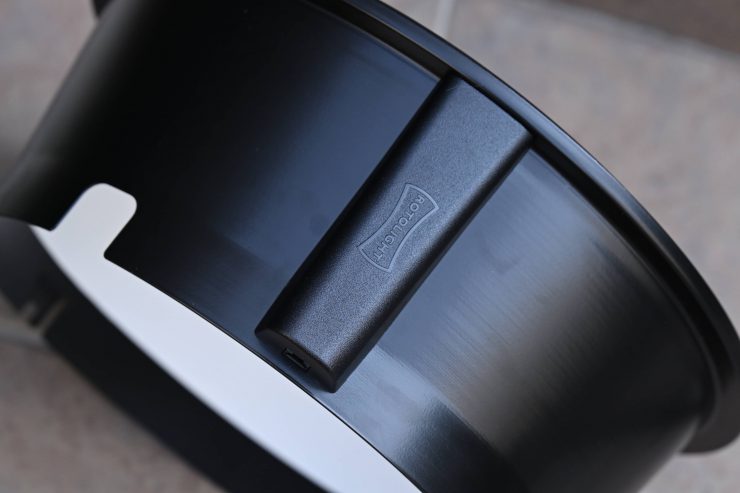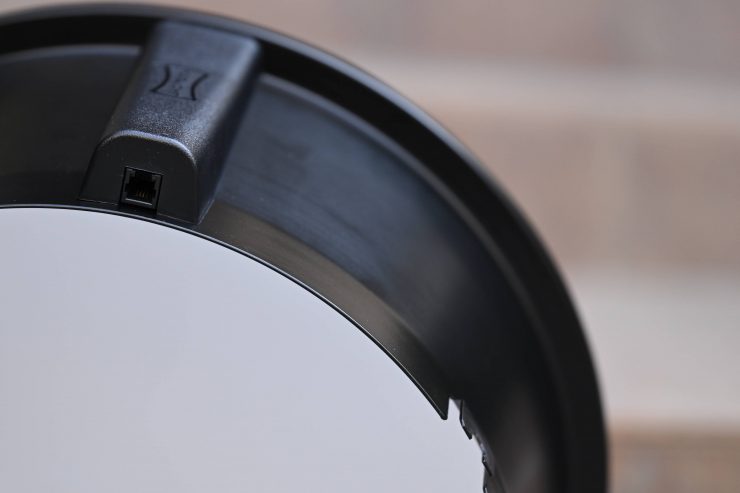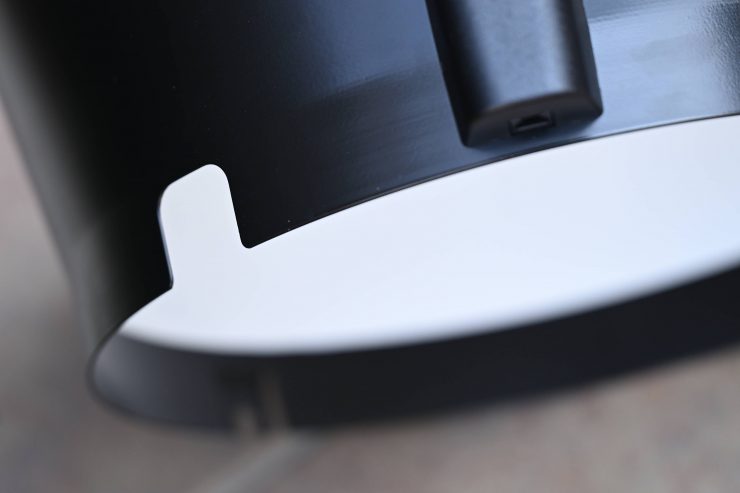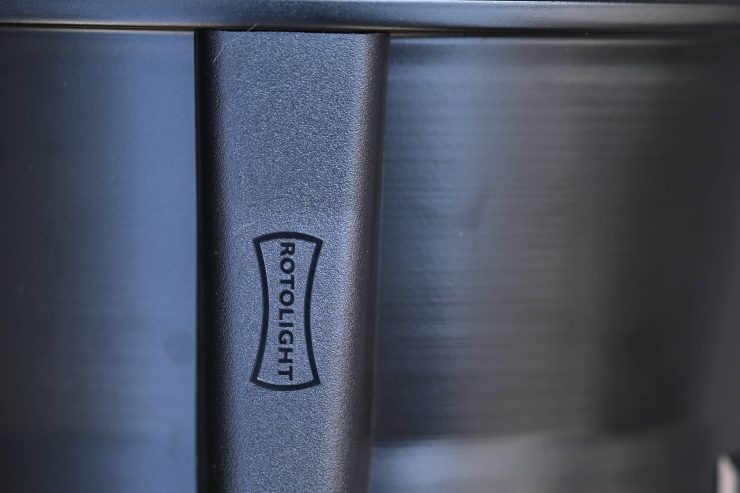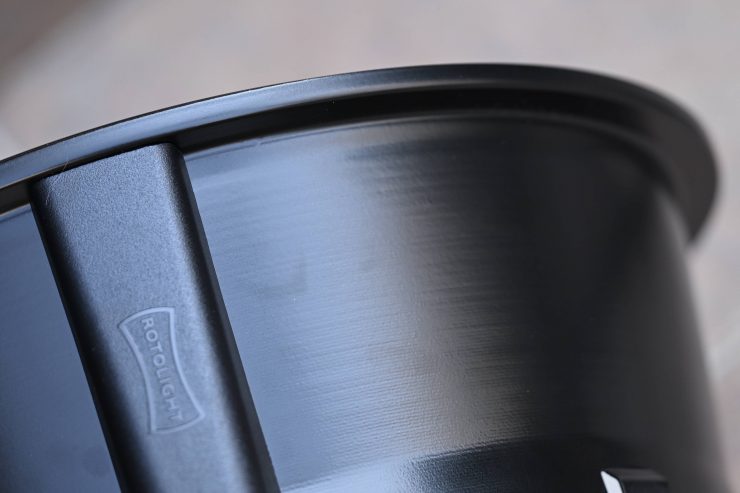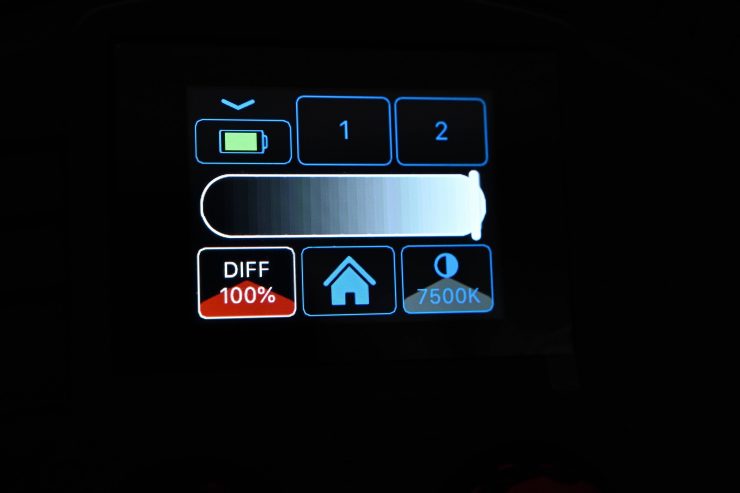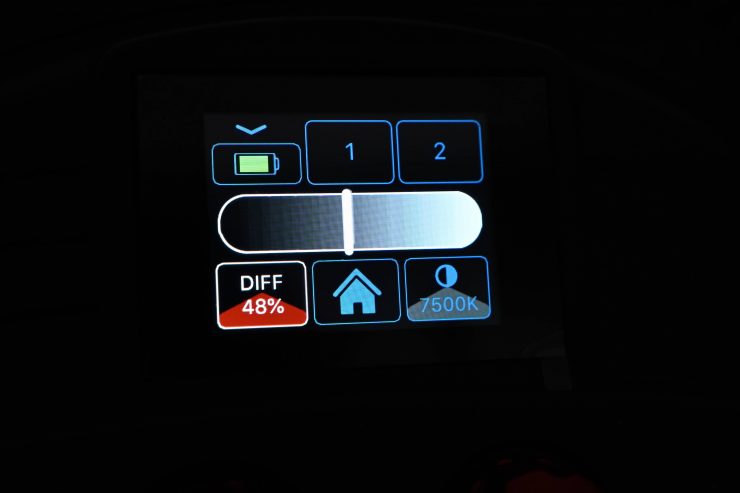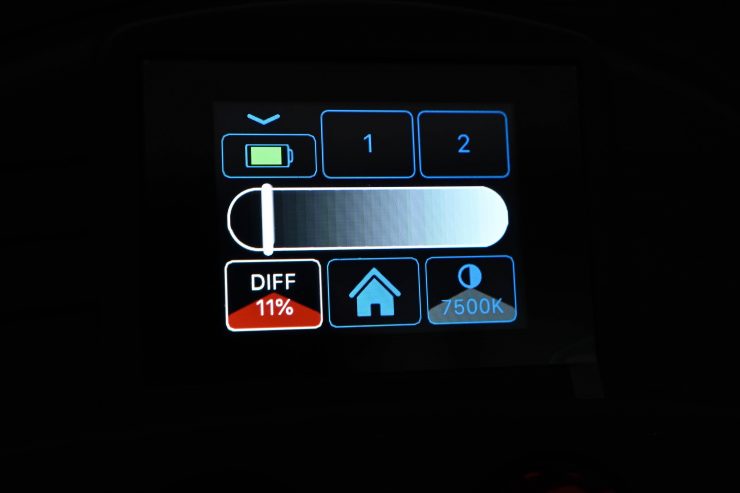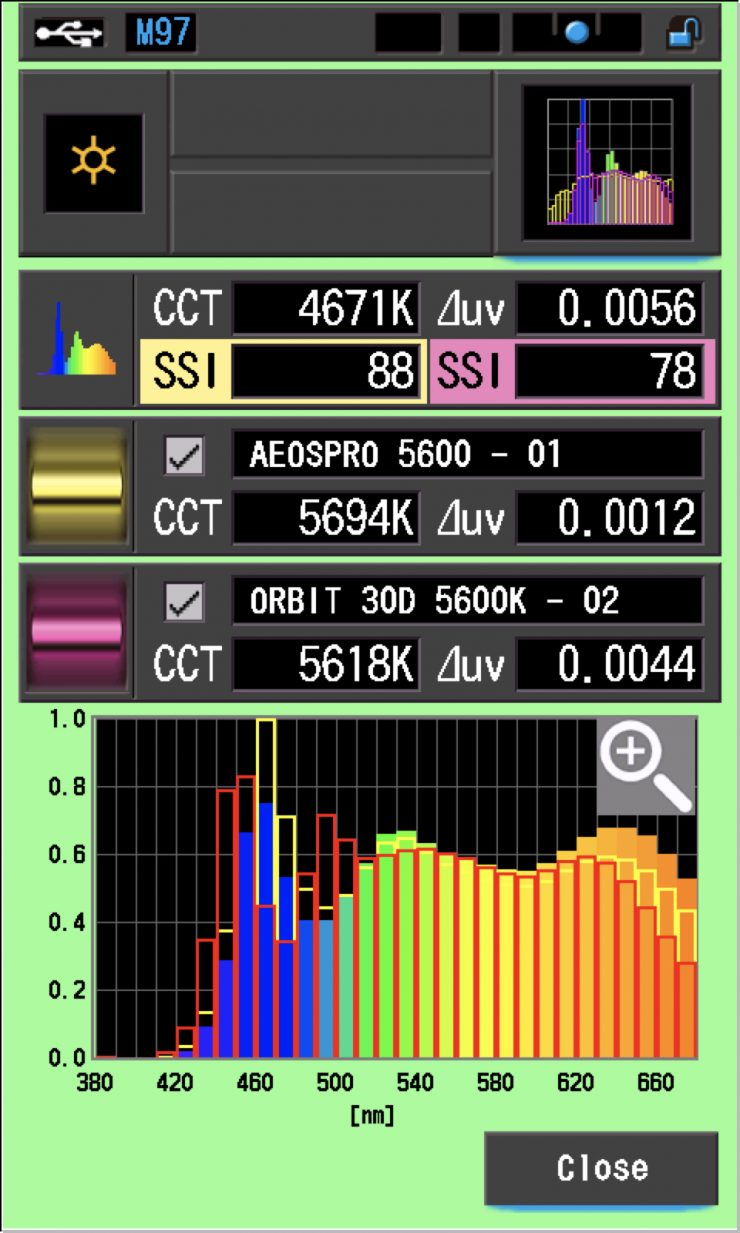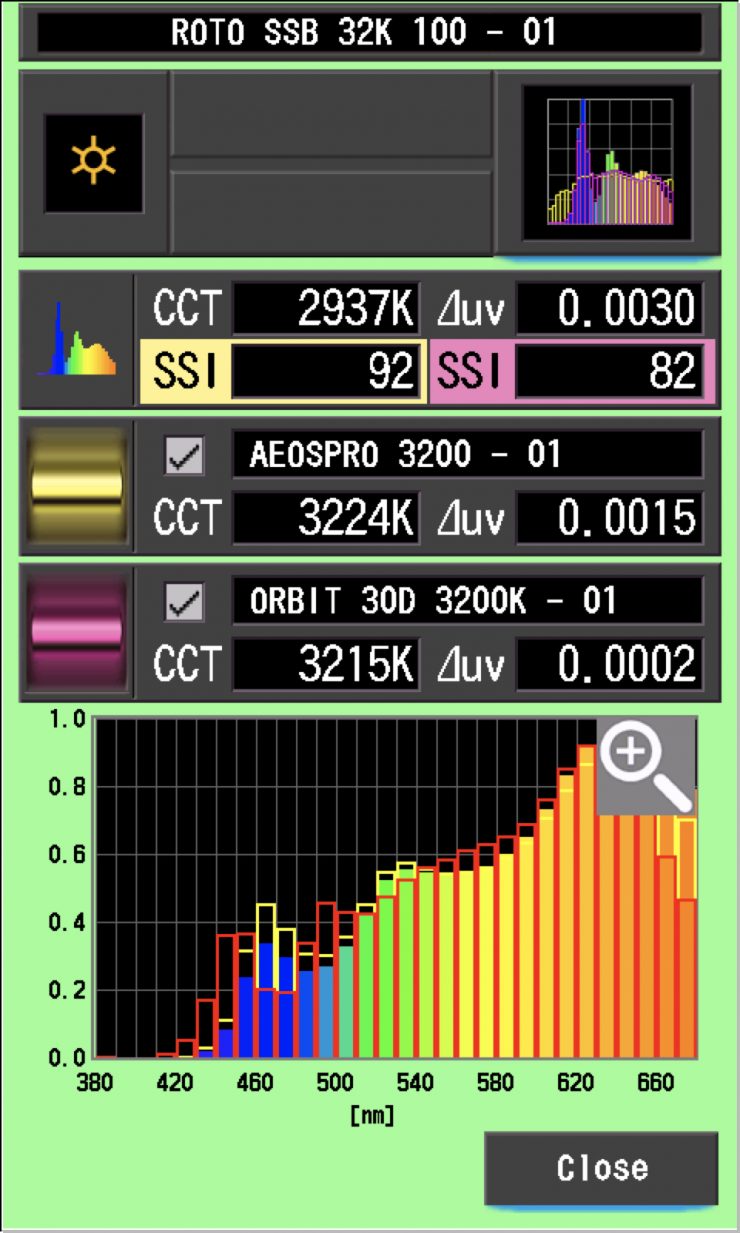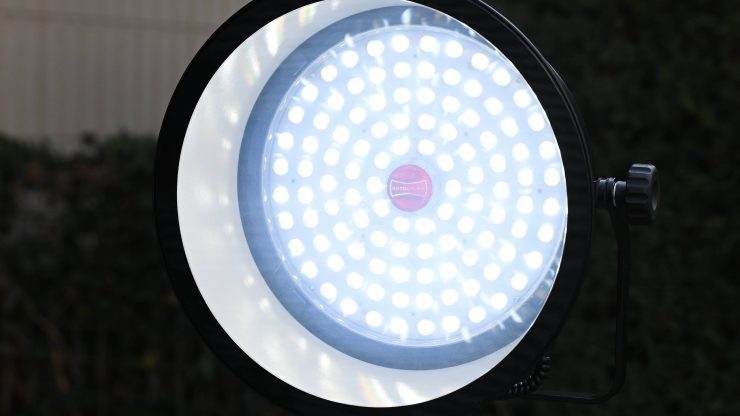
The Rotolight AEOS 2 SmartSoft Box was announced way back in May 2022. It has taken a long time to get to market, but now it is finally shipping.
How is it different from your regular softbox?
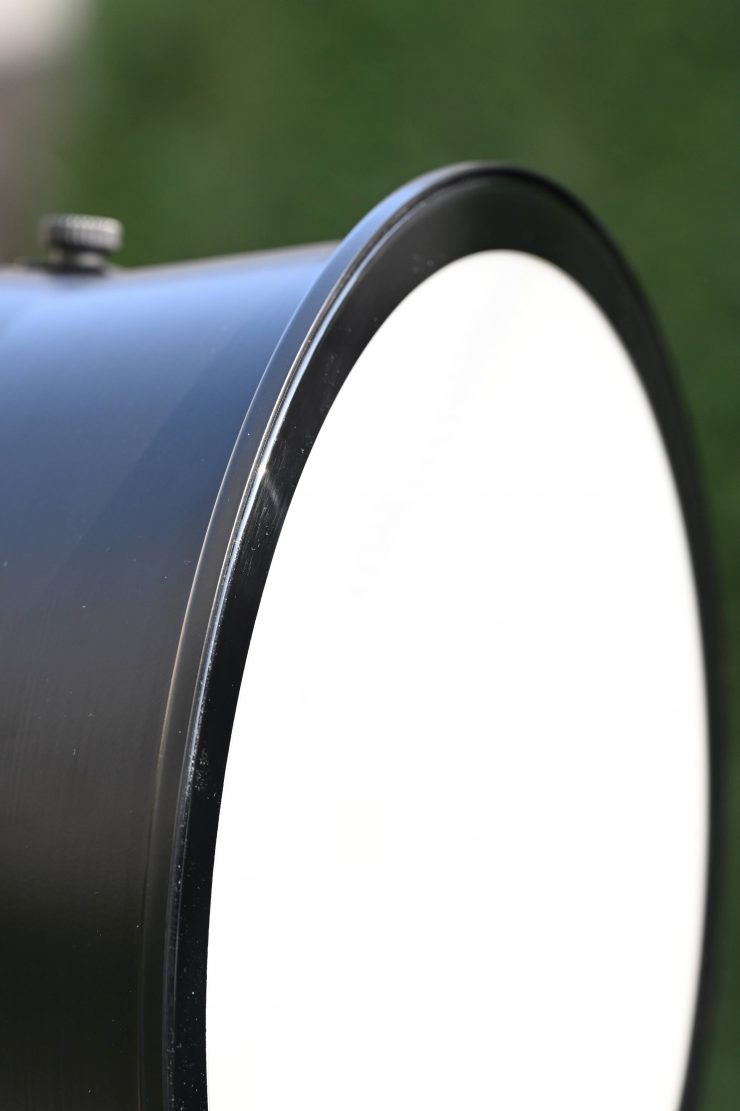
The Rotolight SmartSoft Box allows users to electronically adjust diffusion, focus and spread without the need for gels or additional modifiers. It is best to liken it to having a LEE 216 on an adjustable dial.
It provides 1.5 stops of electronically variable diffusion by utilizing
Rotolight’s patented technology.
Hold on, hasn’t this been done before?
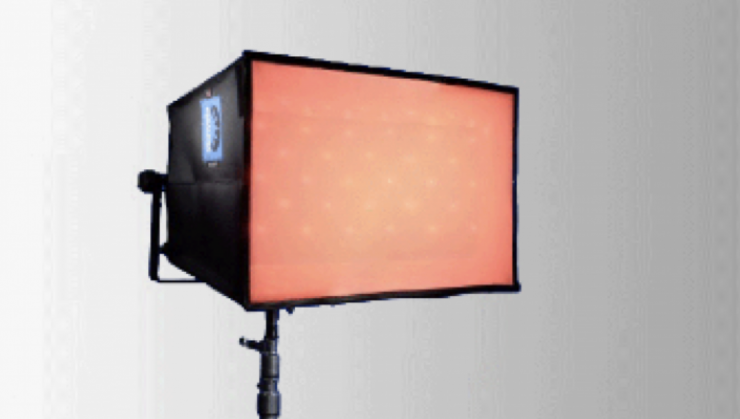
Well, yes and no. You may well remember way back at NAB 2017, Zylight and Chimera partnered up to create what they were calling Active Diffusion. In fact, even that wasn’t the first time something like this had been shown. If we go way back to NAB 2011, Chimera was showing a prototype of a similar solution that never got off the ground.
Active Diffusion was being touted as a flexible, electronically-controllable LCD screen that can be used with fluorescents or any other cool lights, like LEDs, Zylight’s Active Diffusion panel affixed to gel frames, or precisely-sized Chimera softboxes.
The adjustable opacity of the Active Diffusion panel allowed users to dial in the diffusion from 0-100% through a remote-control handset. The whole concept was that you could change from a hard to a soft source without having to take off lighting modifiers or switch out fixtures.
The unit accepted 9V power and was DMX capable, so you could rig it to a fixture and not have to worry about ladders or access when you want to tweak the opacity level.
While this never made it to market, Zylight did incorporate the technology into its Go-Panel back in 2019, however, this is different from the softbox solution they were first showing.
Ok, back to the AEOS 2 SmartSoft Box
The technology for the AEOS 2 SmartSoft Box comes from what Rotolight learned from designing the Titan X2 and X1 fixtures. Both those fixtures utilize SmartSoft Diffusion which in a nutshell is electronically adjustable diffusion, where you can change the beam angle and spread out the light to make it softer.
Essentially, the SmartSoft Box is an extension of that technology that takes the diffusion off the light and puts it into a softbox.
Size & Weight
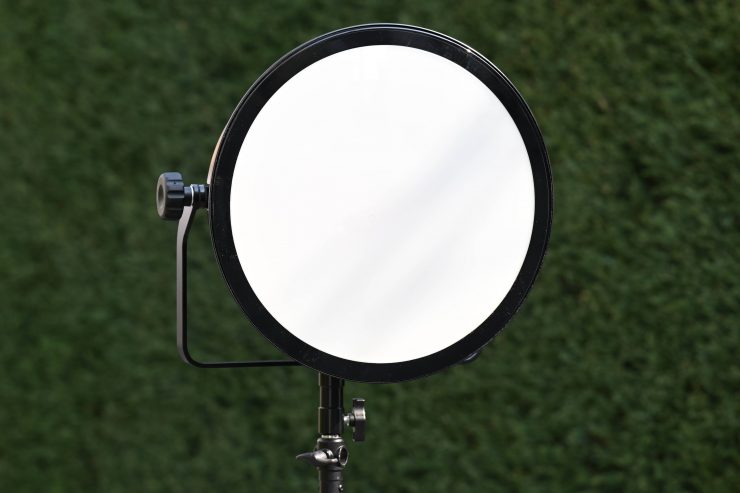
Now, here is one of the caveats of using the AEOS 2 SmartSoft Box. It isn’t a softbox per se, and it doesn’t collapse down like one.
This creates a slight issue because the SmartSoft Box takes up quite a bit of real estate, and therefore it needs its own bag,
In some ways, this negates the small size and footprint that you have with storing and transporting the AEOS 2 or AEOS 2 Pro. The AEOS 2 SmartSoft Box bag is almost as big as the optional bag that you can use for the AEOS 2 or AEOS 2 Pro.
On the positive side, the bag, including the AEOS 2 SmartSoft Box is relatively lightweight and it weighs 2.9kg / 6.39 lb.
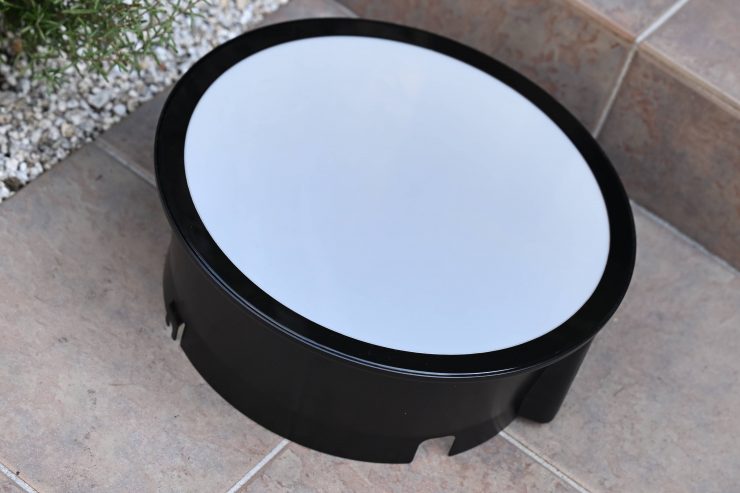
The AEOS 2 SmartSoft Box tips the scales at about 900g / 1.98 lb.
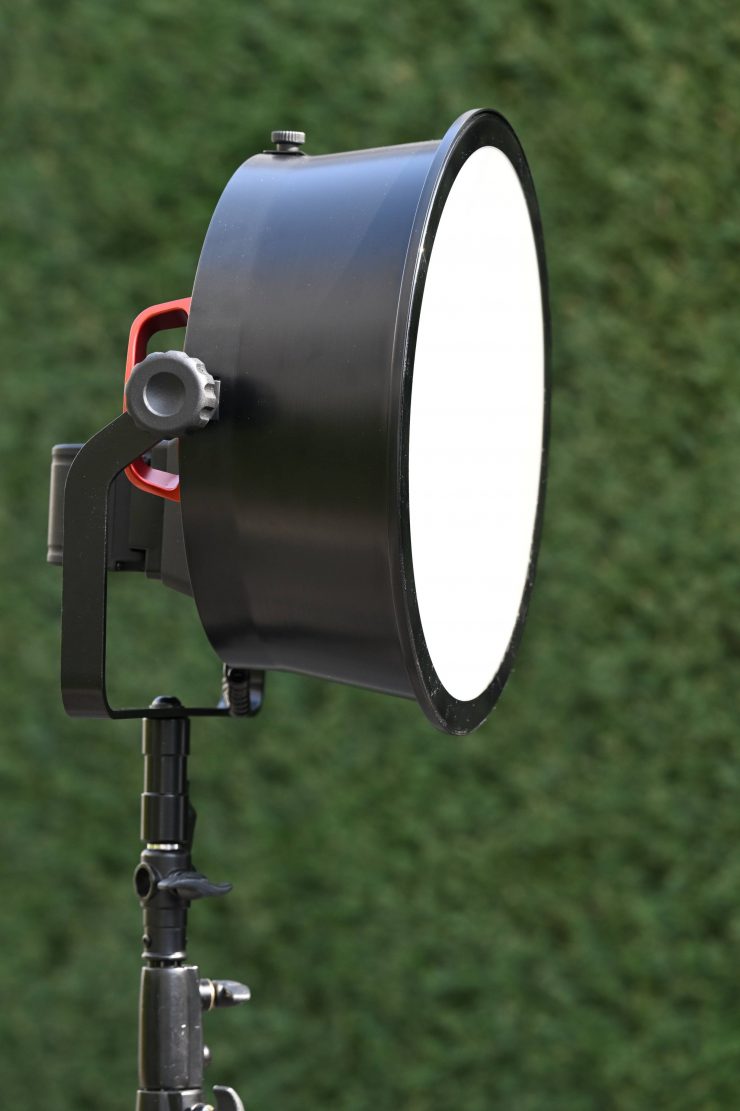
If you add the AEOS 2 SmartSoft Box to an AEOS 2 Pro fixture the weight is about 2.3kg. This still makes it relatively lightweight and you can still use it on smaller-sized light stands without any issues.
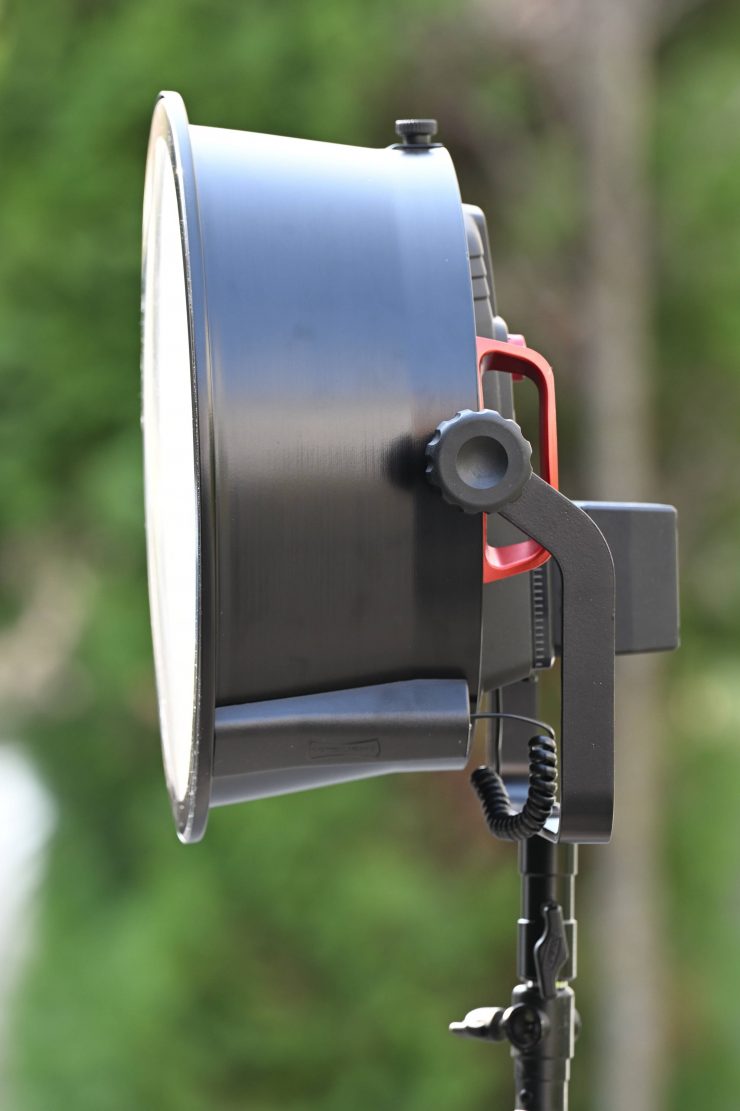
SmartSoft Box 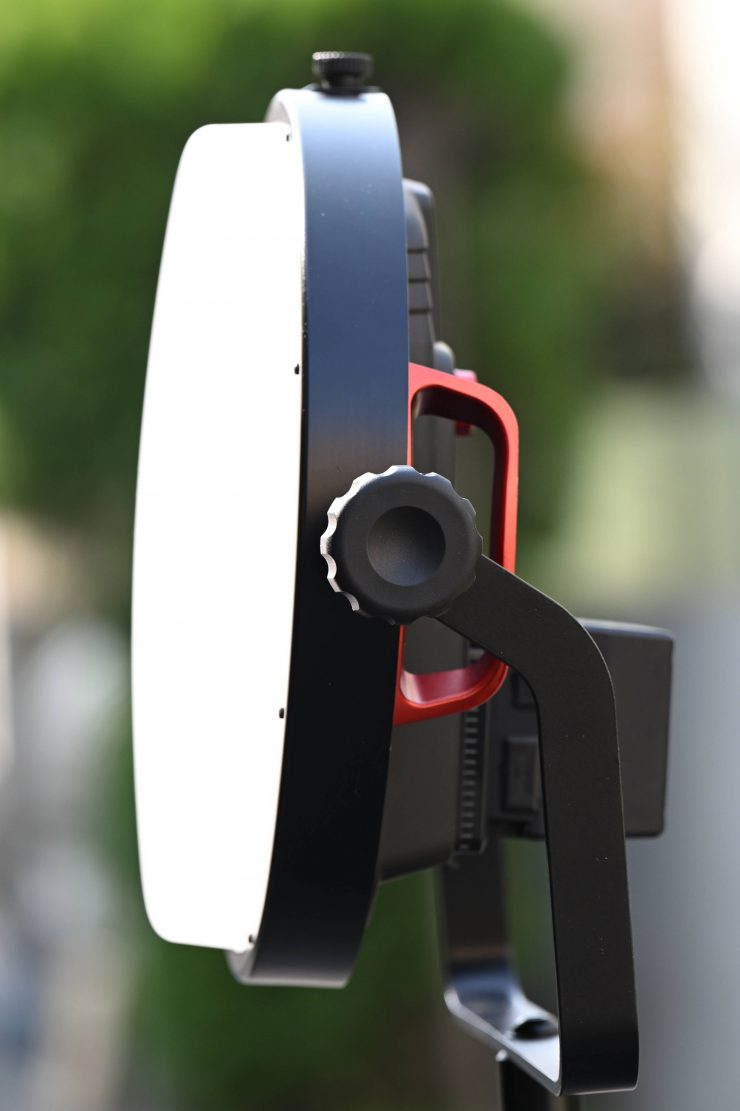
Standard Diffusion Dome
The actual SmartSoft Box is around 14cm / 5.51″ thick, so it is more than double the depth of the standard diffusion dome which is only 6cm / 2.36″ deep.
This extra depth certainly helps in creating a softer light because it is further away from where the LEDS are.
Build Quality
The diffusion on the front of the AEOS 2 SmartSoft Box appears to be made out of some hard plastic-like material and the back of the casing is made out of some type of lightweight metal.
Despite only weighing 900g, the build quality does seem decent enough. There isn’t really anything that you could break unless you were really trying to.
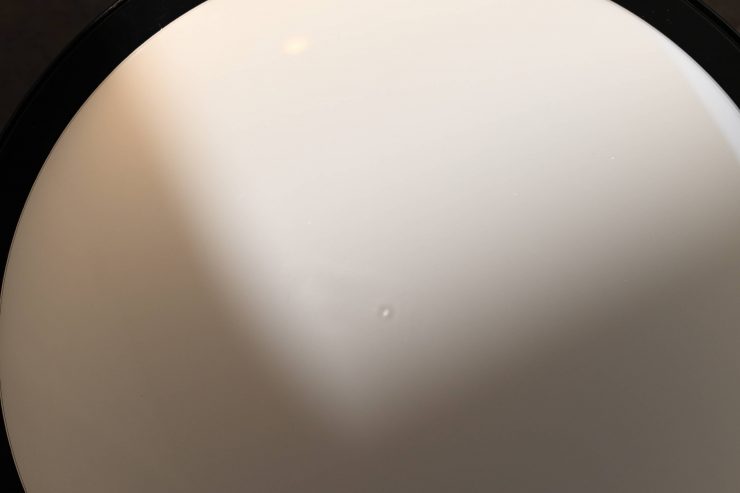
The only small concern I had is that when I turned the SmartSoft Box on for the first time it did make some creaking noises and what I found is that it did get an indent on the front of the diffusion panel. I am not sure if this is supposed to happen, but it did. You can see it in the image above.
How does it attach to an AEOS 2 or AEOS 2 Pro?
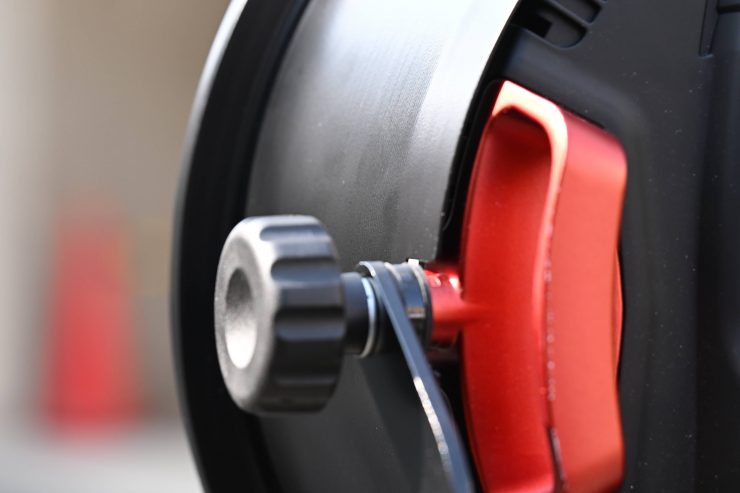
It is pretty easy to attach it to an AEOS 2 or AEOS 2 Pro.
All you need to do is to make sure you don’t have any accessories or the front diffusion panel that comes with the light on the fixture.

You simply line it up with the receptor point on the fixture and then just tighten it down by using the small-sized knob that comes with the AEOS 2 and AES 2 Pro, as well as the two included M8 knobs that come with the SmartSoft Box.
If you are using one of the lights with its yoke frame you need to put that on before tightening up the M8 knobs.
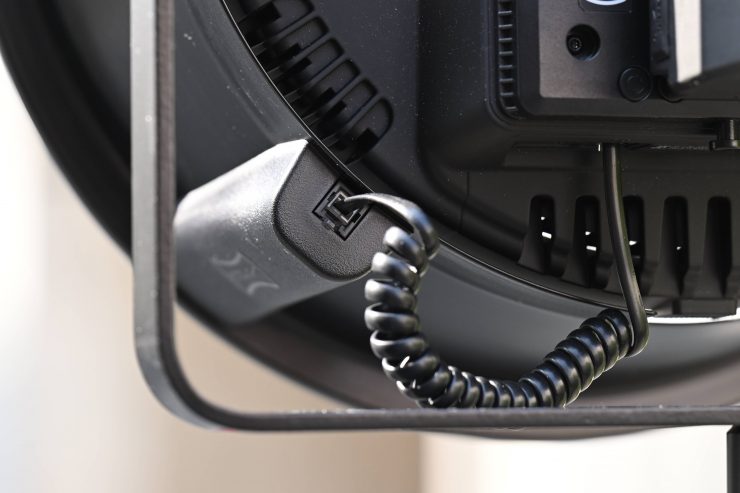
You then need to attach the included cable that connects the SmartSoft Box to the fixture. This is what provides the power and communication to the SmartSoft Box.
What do you have to do next?
Once everything is connected, you then turn on your AEOS 2 or AEOS 2 Pro and then access the CCT mode on your fixture. In CCT mode you then need to press the bottom left-hand icon twice to toggle your light between brightness and SmartSoft control.
You can then use the touchscreen slider or the red control dial to increase or decrease the amount of diffusion.
Output & Color Consistency
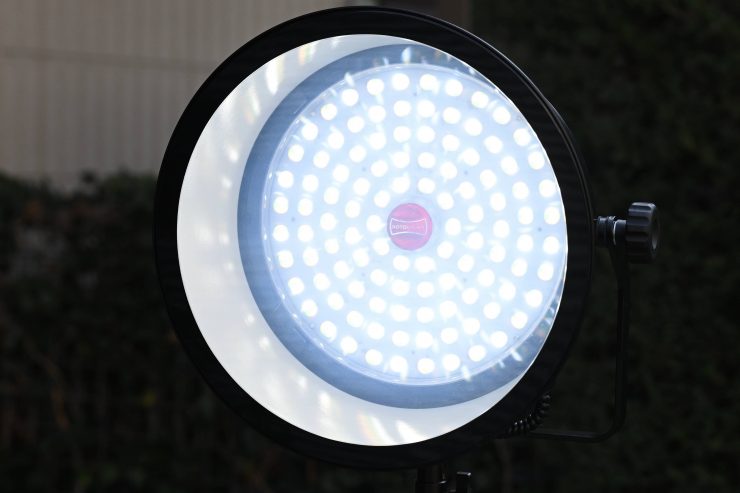
I was interested to see how much output the AEOS 2 Pro had when using the SmartSoft Box at various Diffusion settings as opposed to using the standard Diffusion Dome. I also wanted to see if the SmartSoft Box was altering the CCT accuracy.
Output
So as a reference, let’s see how much output the AEOS 2 Pro has when it is set at 5600K and its Diffuser Dome is used.
AEOS 2 Pro 5600K (Diffusion Dome)
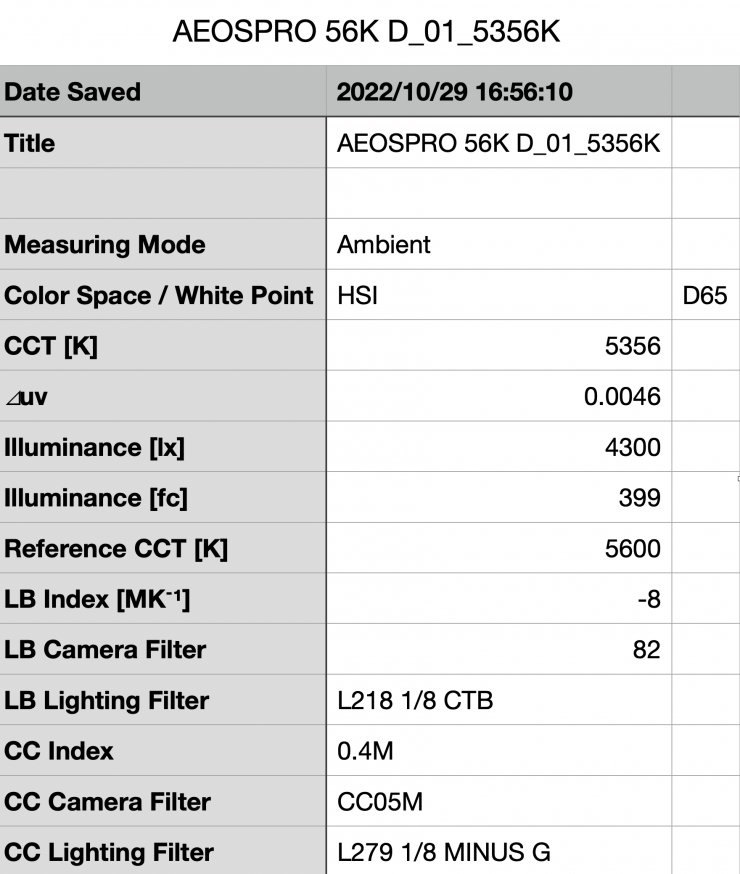
Above you can see the AEOS 2 PRO when set at 5600K with the diffusion dome attached recorded an output of 4300 lx (413 fc). This was 34% less than what it put out with the diffusion dome removed.
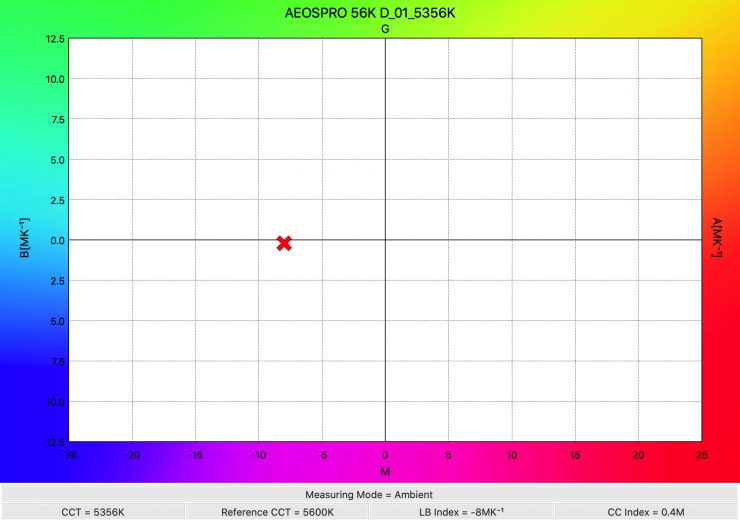
The light recorded a CCT reading of 5356K which was around 150K from being accurate. This clearly showed me that the diffusion dome is altering the CCT by a few hundred Kelvin.
Ok, so now let’s have a look at the figures for the AEOS 2 Pro with the SmartSoft Box attached.
AEOS 2 Pro 5600K (SmartSoft Box 100% Diffusion)
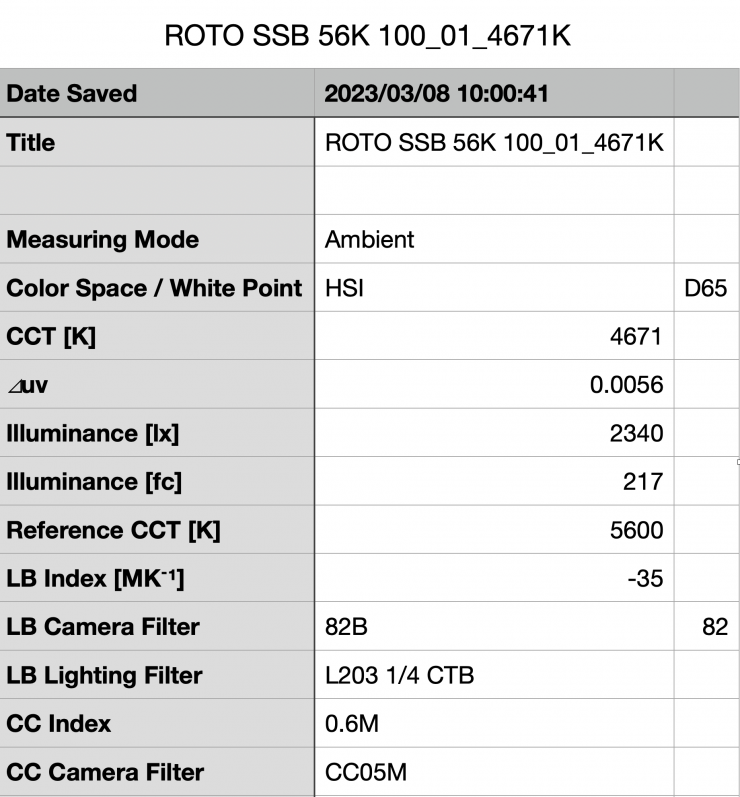
Above you can see the AEOS 2 PRO when set at 5600K with the SmartSoft Box attached and the diffusion set to 100% recorded an output of 2340 lx (217 fc). This was 45.58% less than what it put out with the standard diffusion dome being used.
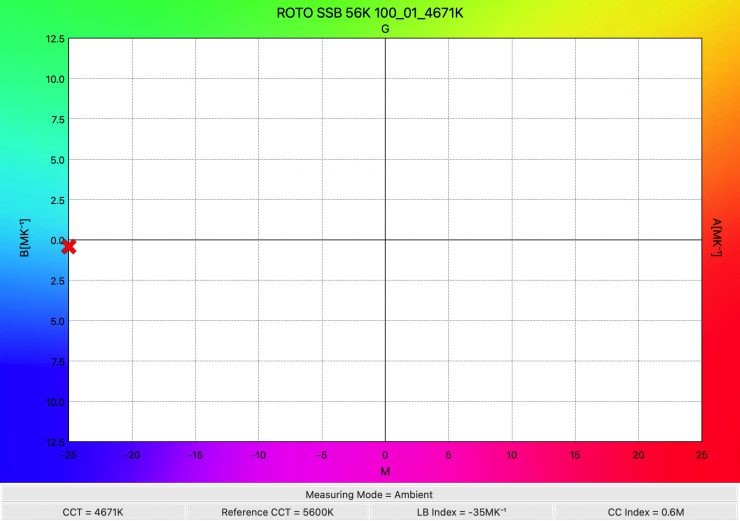
The light recorded a CCT reading of 4671K which was almost 1000K from being accurate. This clearly shows me that the SmartSoft Box is massively altering the CCT. As a comparison, when the AEOS 2 Pro is used with its standard diffusion dome it recorded a reading of 5356K.
Ok, so let’s now have a look at some more readings if we set the SmartSoft Box diffusion to 50% and 0%.
AEOS 2 Pro 5600K (SmartSoft Box 50% Diffusion)
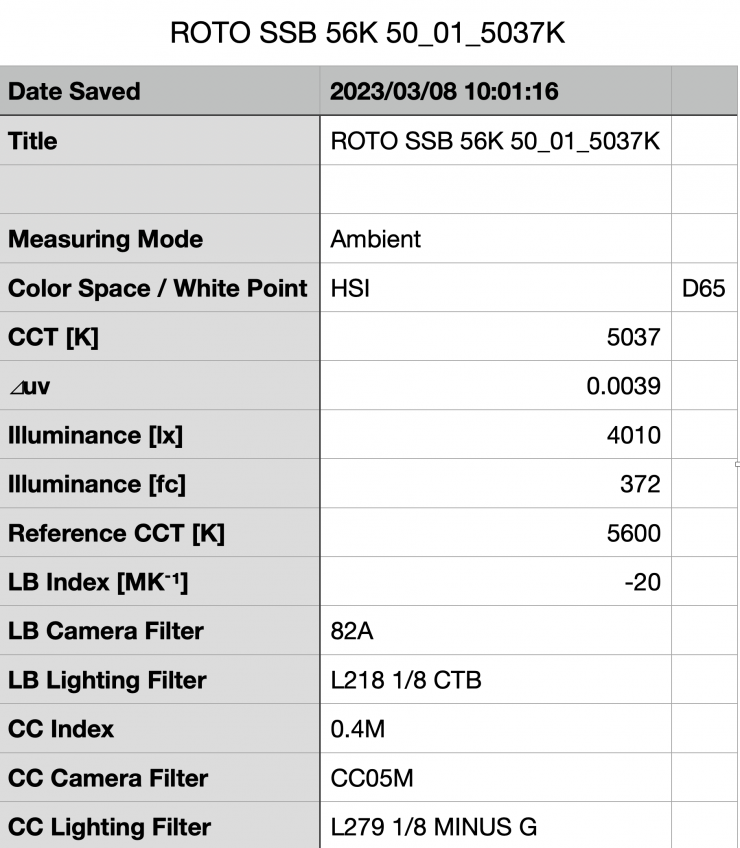
Above you can see the AEOS 2 PRO when set at 5600K with the SmartSoft Box attached and the diffusion set to 50% recorded an output of 4010 lx (372 fc). This was 71.36% more than what it put out when the SmartSoft Box was set at 100% diffusion.
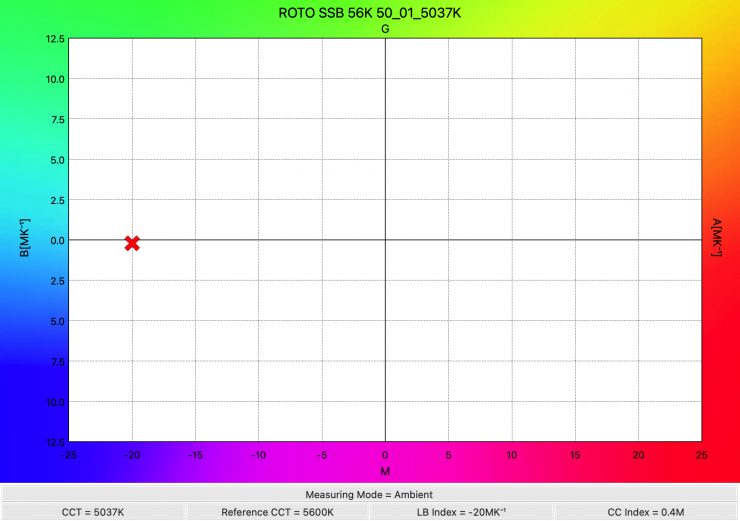
The light recorded a CCT reading of 5037K which was almost 600K from being accurate, but it was a lot better than the 4671K it recorded with the diffusion set to 100%.
AEOS 2 Pro 5600K (SmartSoft Box 0% Diffusion)
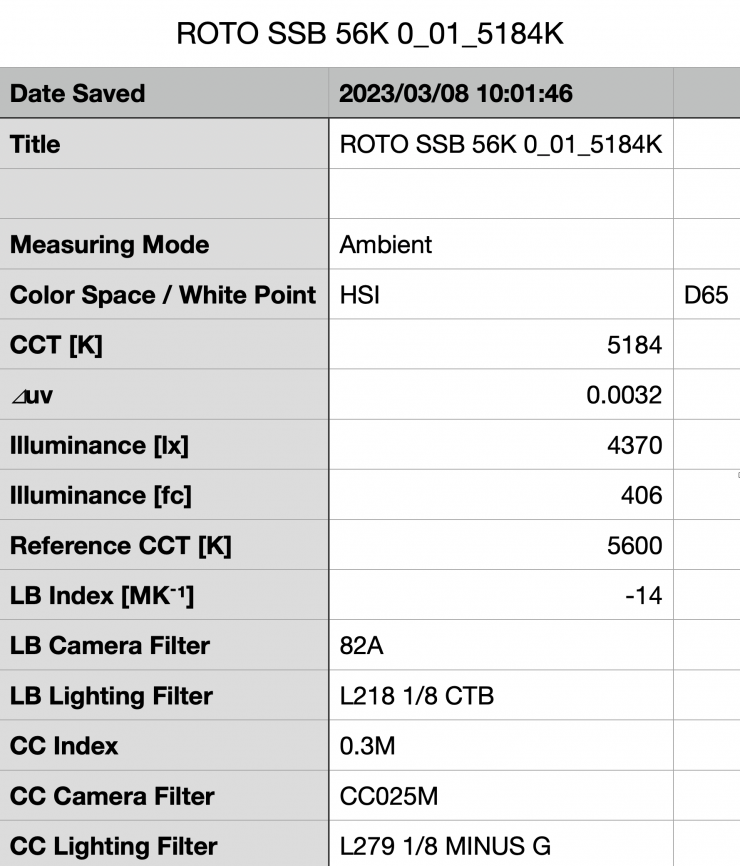
Above you can see the AEOS 2 PRO when set at 5600K with the SmartSoft Box attached and the diffusion set to 0% recorded an output of 4370 lx (406 fc). This was 86.75% more than what it put out when the SmartSoft Box was set at 100% diffusion. Interestingly enough, the output difference between using the SmartSoft Box at 50% and 0% diffusion was only 360 lx.

The light recorded a CCT reading of 5037K which was almost 600K from being accurate, but it was a lot better than the 4671K it recorded with the diffusion set to 100%.
Just as another comparison let’s quickly look at the differences in output when using the AEOS 2 Pro at 3200K with the SmartSoft Box and with its standard diffusion dome.
AEOS 2 Pro 3200K (Diffusion Dome)
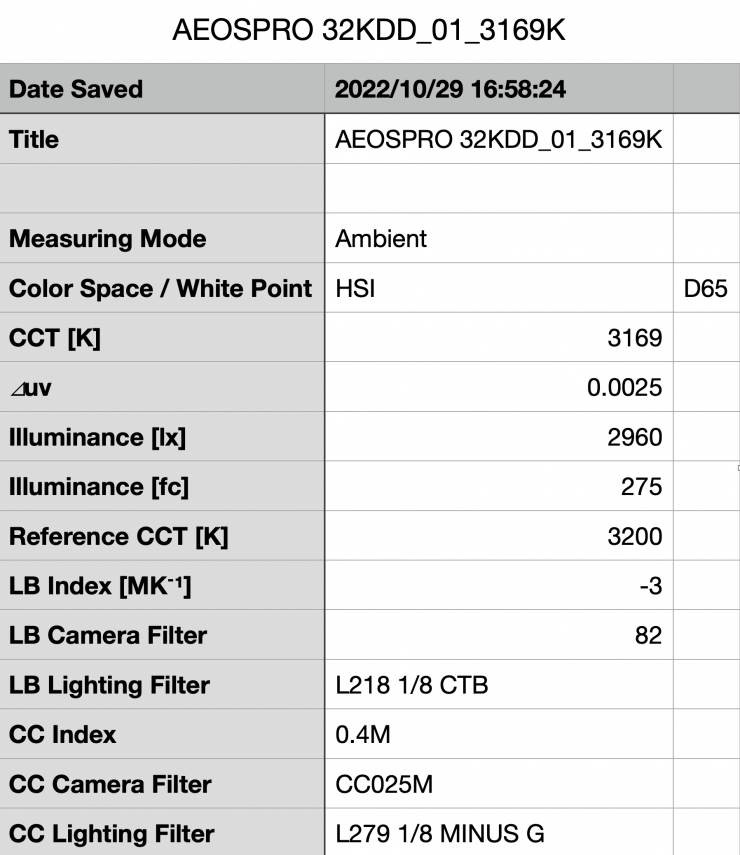
Above you can see the light’s output when it was set at 3200K and used with its diffusion dome. It produced 2960 lx (275 fc), which was 31.1% less than the 4300 lx it produced at 5600K.
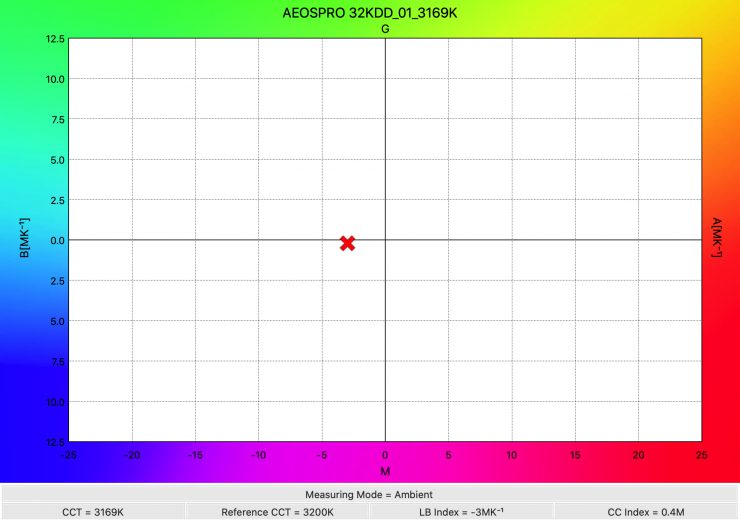
As far as CCT accuracy goes, it recorded a reading of 3169K. This was an excellent result.
AEOS 2 Pro 3200K (SmartSoft Box 100% Diffusion)
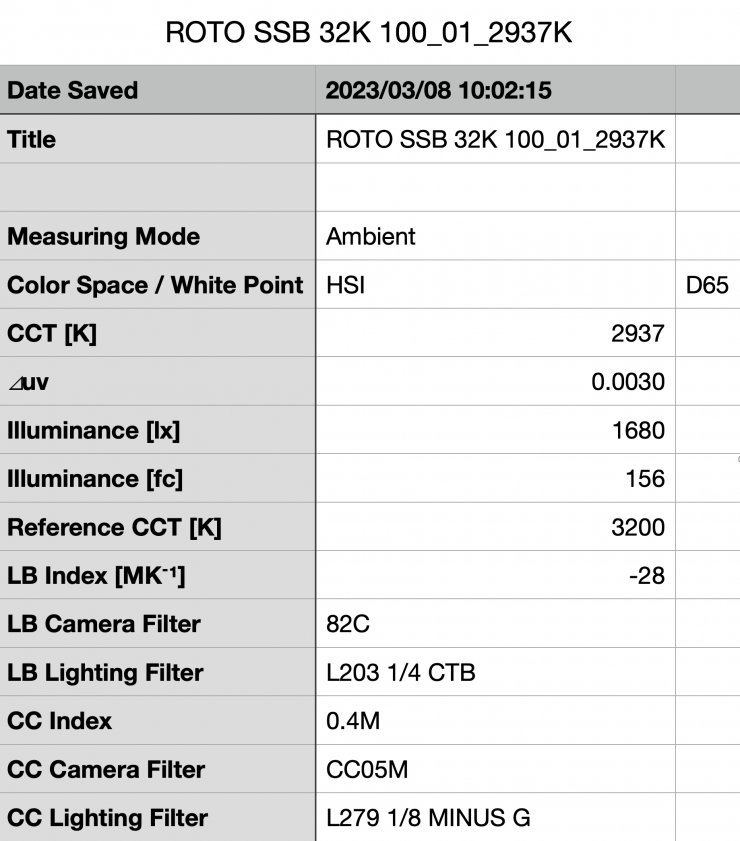
Above you can see the light’s output when it was set at 3200K and used with the SmartSoft Box with the diffusion set at 100%. It produced 1680 lx (156 fc), which was 71.69% less than the 2960 lx it produced when using the diffusion dome.
The output of 1680 lx (156 fc) is pretty low and you would struggle in a lot of situations for this to be enough to use the fixture as a key light.
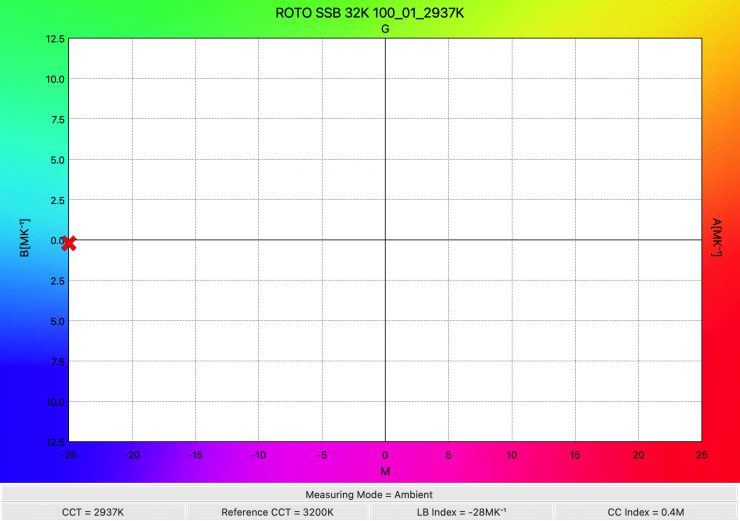
As far as CCT accuracy goes, it recorded a reading of 2937K, which was an ok result. Again, these tests clearly show me that the SmartSoft Box is altering the CCT of the light. While it isn’t as pronounced at 3200K, there is a massive difference when using it with the light set at 5600K.
Color Accuracy
Ok, now that we have looked at output, let’s see how the SmartSoft Box fairs when it comes to color accuracy.
AEOS 2 Pro 5600K
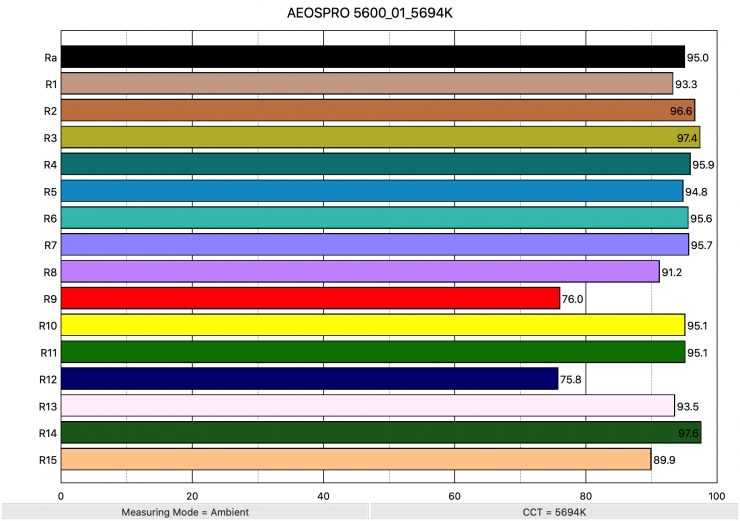
So now that we have seen how much output the AEOS 2 PRO produces, how does it perform when it comes to replicating accurate colors? Above you can see that when the light was set at 5600K it recorded an average CRI (R1-R8) of 95.0 and an extended CRI (R1-R15) of 92.24. For replicating accurate skin tones it recorded 76.0 for R9 (red), 93.5 for R13 (closest to caucasian skin tones), and 88.9 for R15 (closest to Asian skin tones). These were not bad results, but I expected to see higher scores. The scores for R9 (Red) and R12 (Blue) were both below 80.
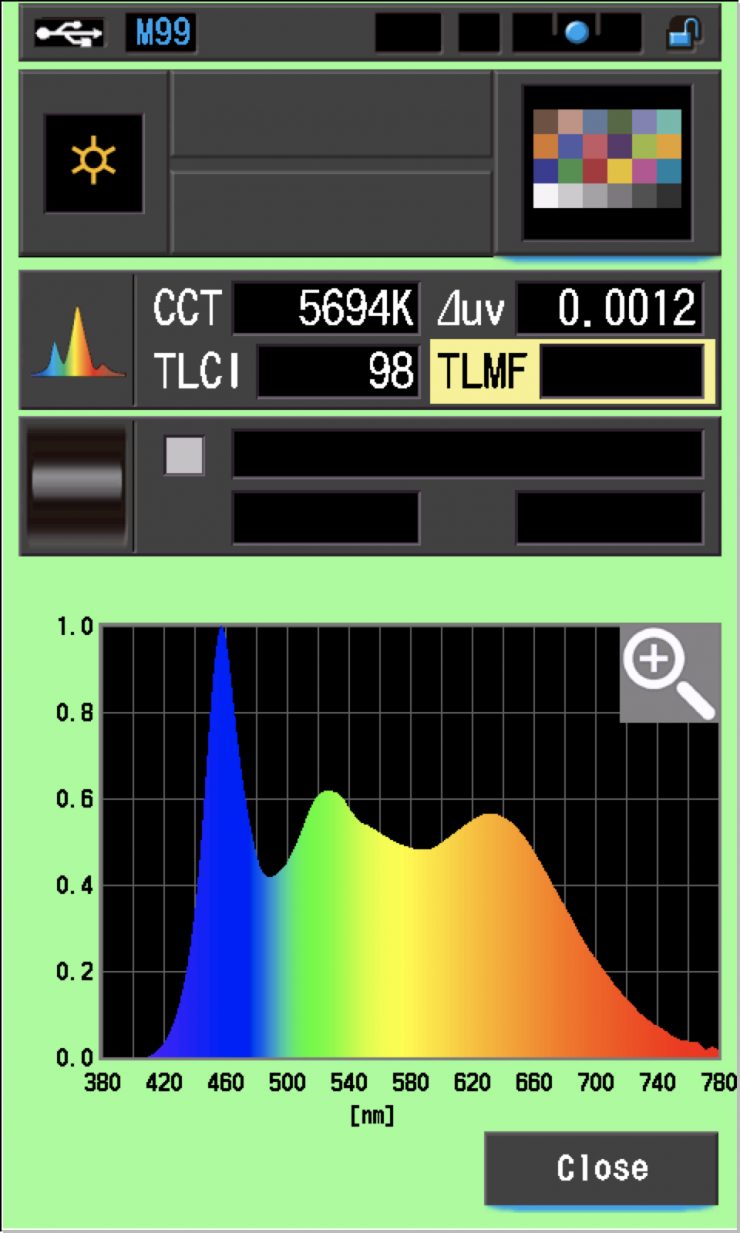
The light, when set at 5600K, recorded a TLCI score of 98.
Ok, so now let’s look at the AEOS 2 Pro with the SmartSoft Box being used with the diffusion set at 100%.
AEOS 2 Pro 5600K (SmartSoft Box 100% Diffusion)
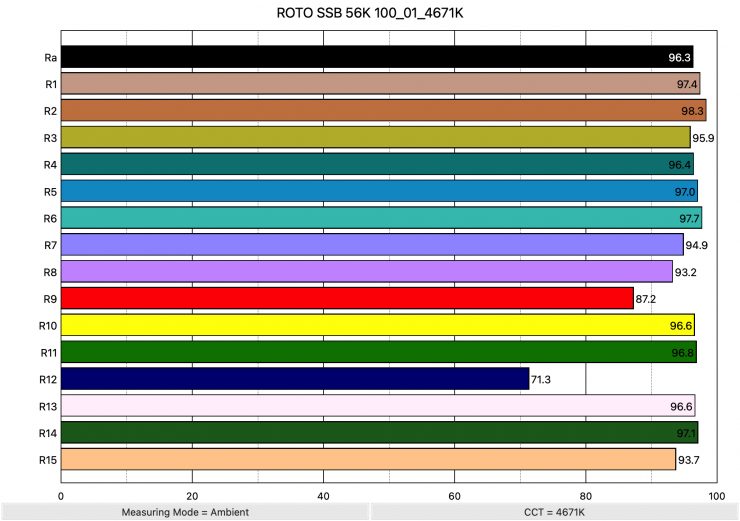
Above you can see that when the AEOS 2 Pro was using the SmarytSoft Box set at 100% diffusion at 5600K it recorded an average CRI (R1-R8) of 96.3 and an extended CRI (R1-R15) of 92.24. For replicating accurate skin tones it recorded 87.2 for R9 (red), 96.6 for R13 (closest to caucasian skin tones), and 93.7 for R15 (closest to Asian skin tones). This tells me that even though the SmartSoft Box is changing the CCT quite dramatically, it is leading to slightly better color accuracy. The results were better than when the light was used without the SmartSoft Box.
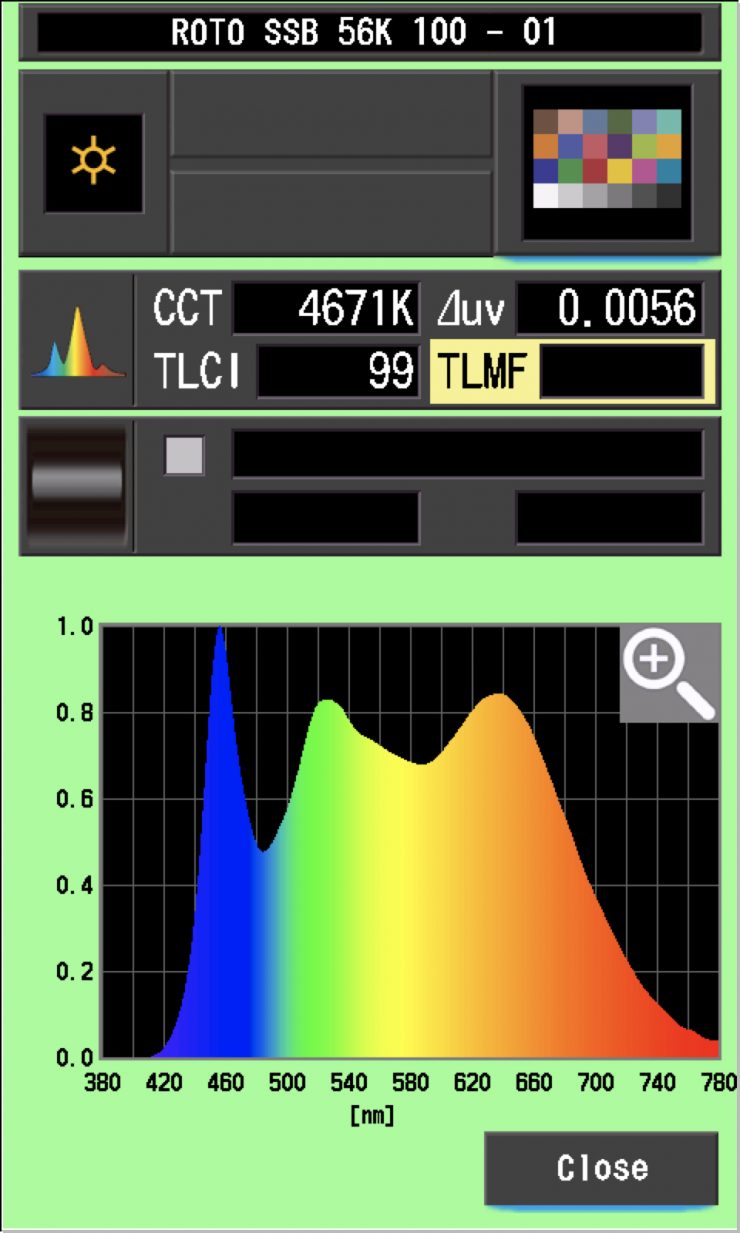
The light, when set at 5600K, recorded a TLCI score of 99.
SSI
SSI (Spectral Similarity Index) was developed by the Sci-Tech Council of the Academy. SSI gives me the ability to set any light as a standard, or use predefined standards (such as CIE D55), and then give other lights an SSI score based upon how well they will match standards such as CIE D55. This way I can measure spectral response and compare it directly against an ideal light source. This is actually a much better test than recording CRI scores. So let’s see how the AEOS 2 Pro fares with the SmartSoft Box attached and the diffusion set at 100%. I will also include results for the AEOS 2 Pro when the SmartSoft Box isn’t being used.
AEOS 2 Pro 3200K (SmartSoft Box Diffusion 100%)
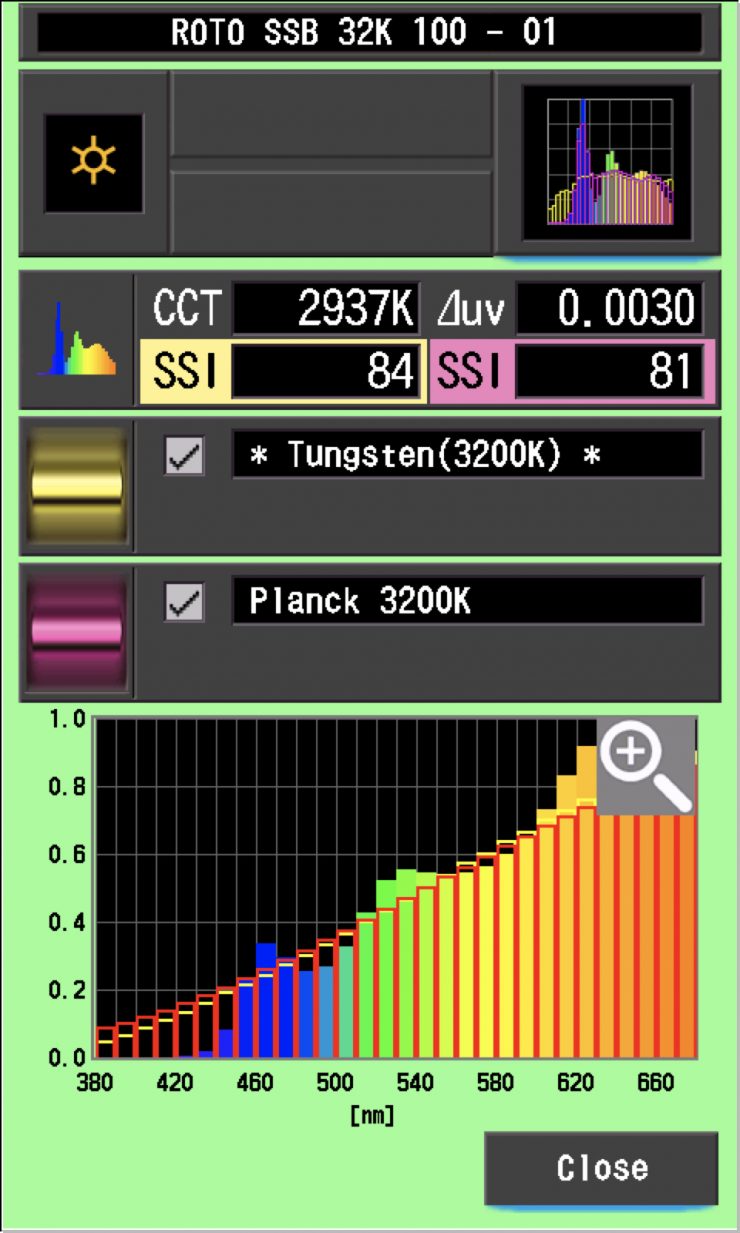
In this graph, the red bars indicate a perfect Planck 3200K source. The gold bars indicate a perfect 3200K Tungsten source. This lets us compare how close to a perfect 3200K lighting source the AEOS 2 PRO is. Any SSI score in the low ’80s is very good for a 3200K LED light. As you can see, LED lights have a hard time replicating colors below about 450nm.
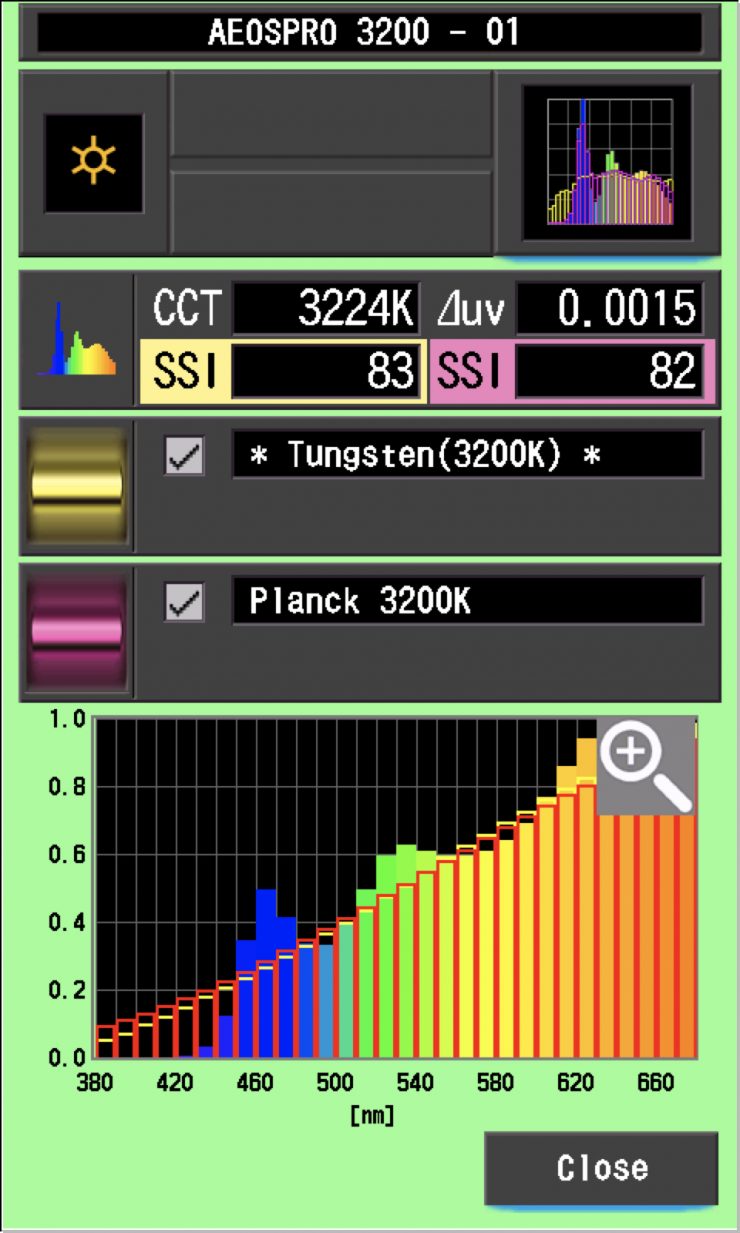
As a comparison, above you can see the results for the AEOS 2 Pro when the SmaartSoft Box isn’t being used. It is no real surprise that both the AEOS 2 and the AEOS 2 PRO had the exact same scores
AEOS 2 Pro 5600K (SmartSoft Box 100% Diffusion)
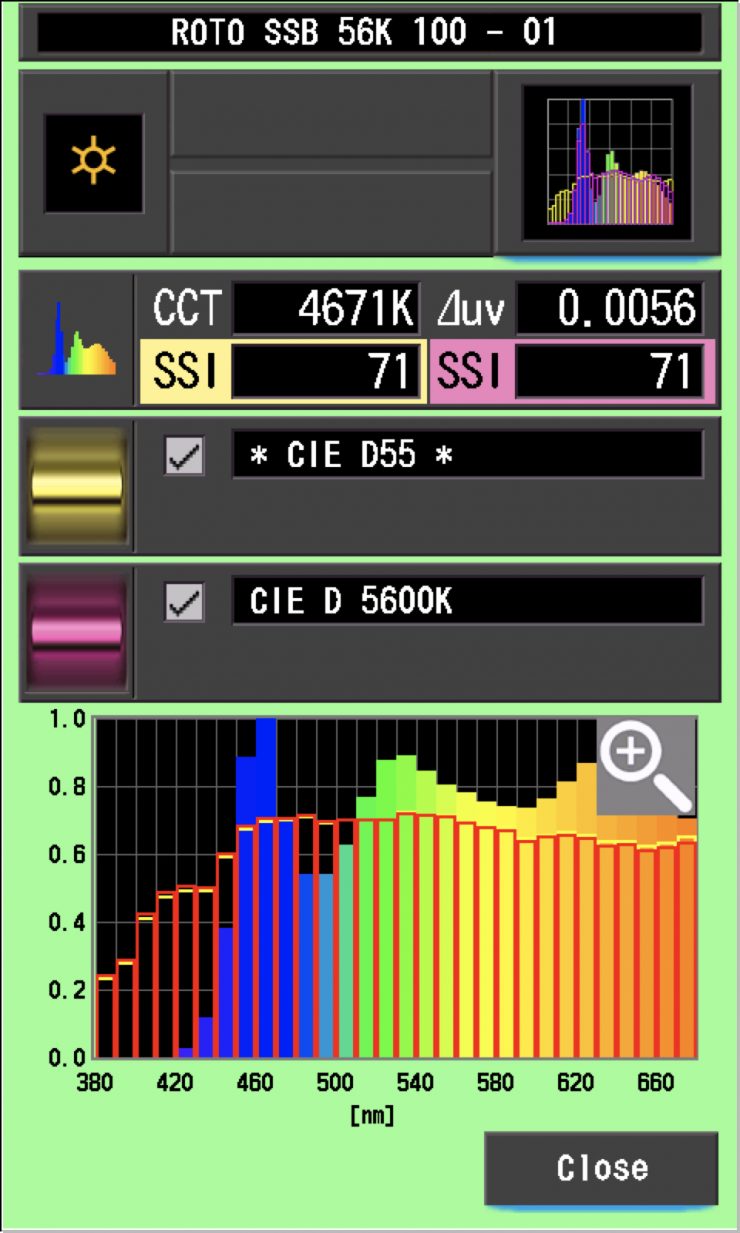
In the graph above the gold bars indicate a perfect CIE D55 source. The red bars indicate a perfect CIE D 5600K source. A score in the low to mid 70’s is good for a 5600K LED source. The AEOS 2 Pro with the SmartSoft Box set at 100% diffusion scored 71.
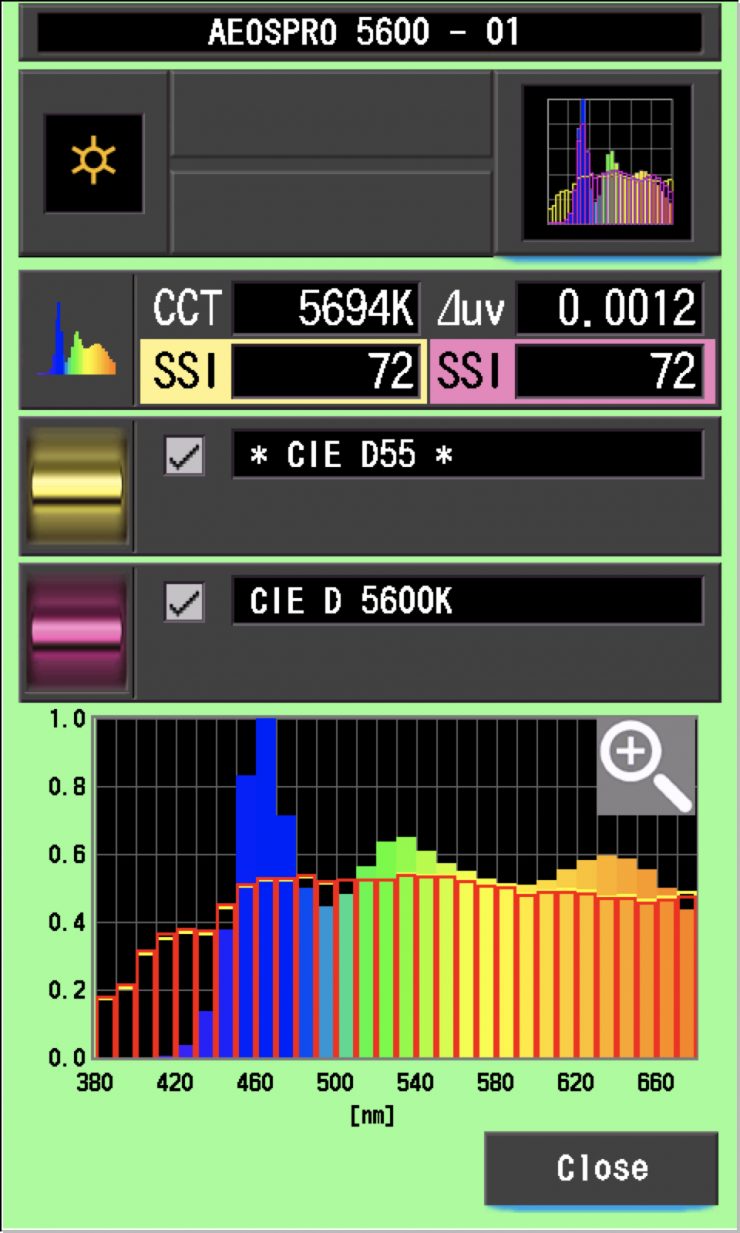
As a comparison, above you can see the results for the AEOS 2 Pro when it wasn’t using the SmartSoft Box.
The main reason we want to record SSI scores is so we can see how well they match with other lights. So, let’s see how the AEOS 2 Pro with the SmartSoft Box matches the AEOS 2 Pro and another branded light, in this case, the ARRI Orbiter.
As you can see, the AEOS 2 Pro with the SmatSoft Box set at 10% diffusion isn’t a perfect match to the AEOS 2 Pro without it being used. While scores of 88 at 5600K and 92 at 3200K are still pretty good, it does clearly show you how lighting modifiers can affect color consistency and accuracy.
Spectral Distribution
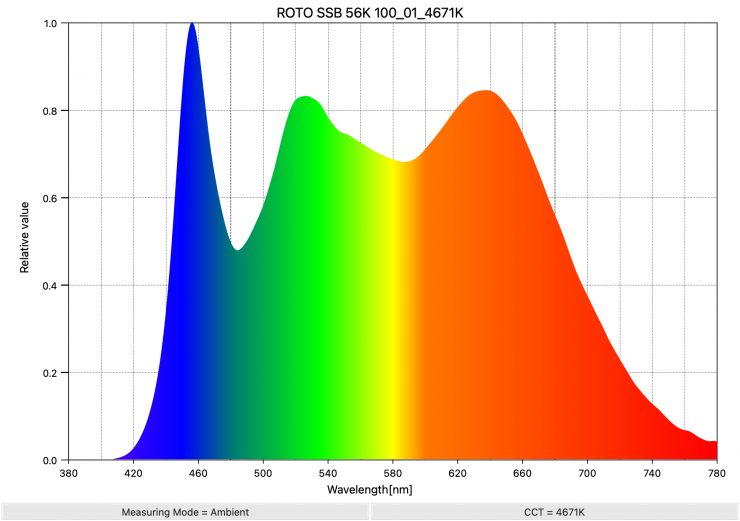
Above you can see the spectral distribution of the AEOS 2 PRO when it is set at 5600K using the SmartSoft Box with the diffusion set at 100%. The spectral distribution is petty full, but you can see spikes at about 520nm and 640nm.
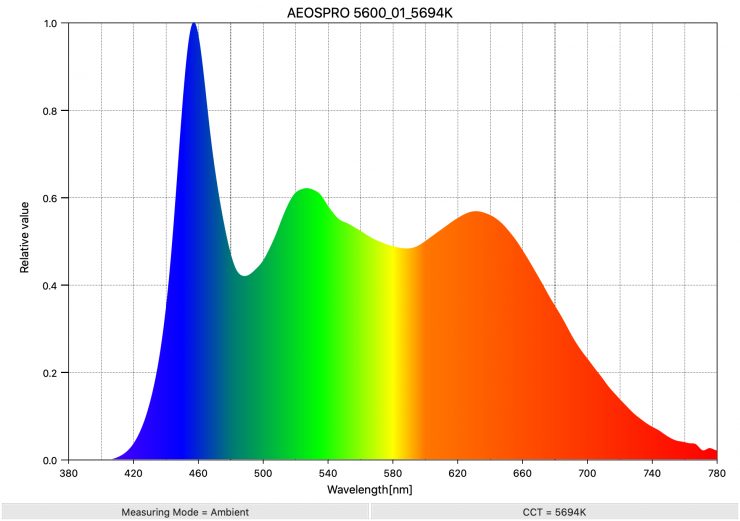
Above you can see the spectral distribution of the AEOS 2 PRO when it is set at 5600K without the SmartSoft Box being used. The spectral distribution is not overly linear and you can see spikes about 520nm and 640nm.
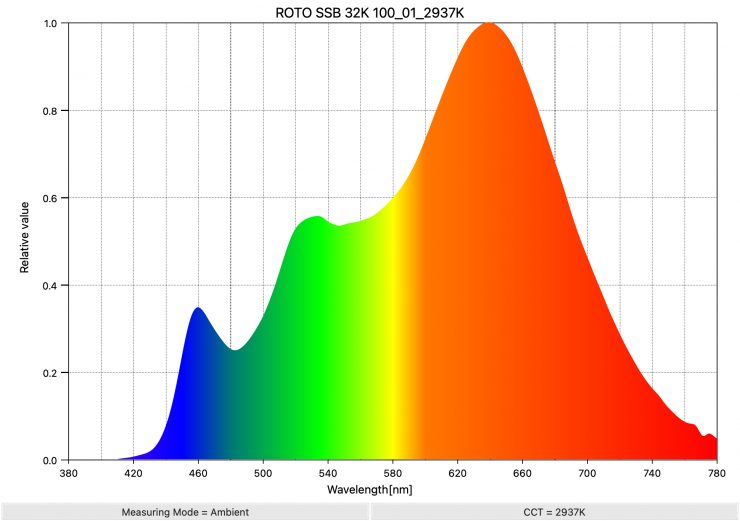
Above you can see the spectral distribution of the AEOS 2 PRO when it is set at 3200K and used with the SmartSoft Box at 100% Diffusion. The spectral distribution is reasonably full but there is a small push toward green.
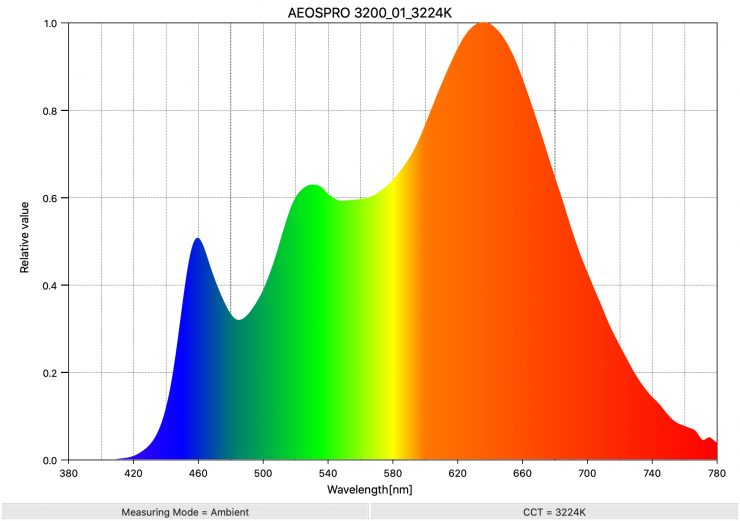
Above you can see the spectral distribution of the AEOS 2 PRO when it is set at 3200K without the SmartSoft Box being used. The spectral distribution is reasonably full but there is a small push toward green.
The results surprised me at 5600K because the AEOS 2 Pro with the SmartSoft Box had a noticeably fuller spectrum than when the light was used without it. However, at 3200K they were basically the same.
Does the SmartSoft Box work well?
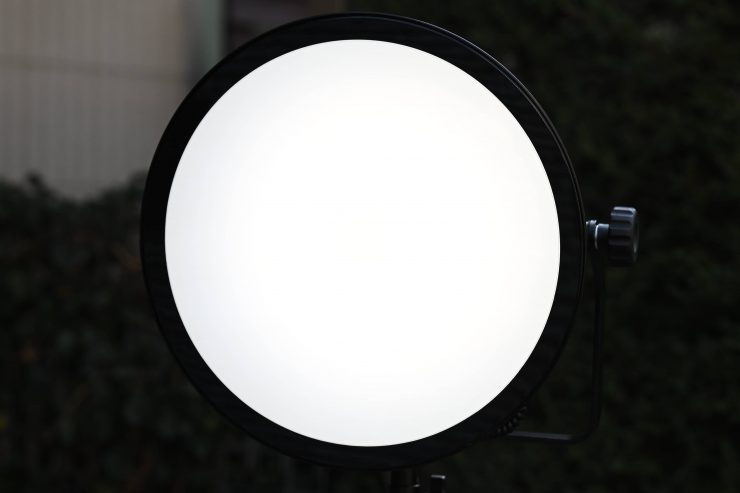
The AEOS 2 Pro in conjunction with the SmartSoft Box works really well. You can create a nice diffused, soft lighting source and it is extremely versatile because you can adjust the amount of diffusion you need.
It is a really clever use of technology and a step forward for lighting innovation in terms of modifiers.
Yes, with 100% diffusion dialed in you do lose a ton of output, however, the AEOS 2 Pro is a relatively small fixture with a low power draw.
I found from my testing that the amount of output you get when using the included diffusion dome that comes with the AEOS 2 Pro is about the same as the output you get when you use the SmartSoft Box with the diffusion set at 0%.
The CCT does get altered quite substantially by the SmartSoft Box when used at 5600K and this is something you need to keep in mind when using it. I found that I had to set the light at 7500K to get a reading of 5604K on the Sekonioc C-800-U.
The AEOS 2 Pro and the SmartSoft Box when set at 100% diffusion create a lovely soft lighting source that produces nice results.
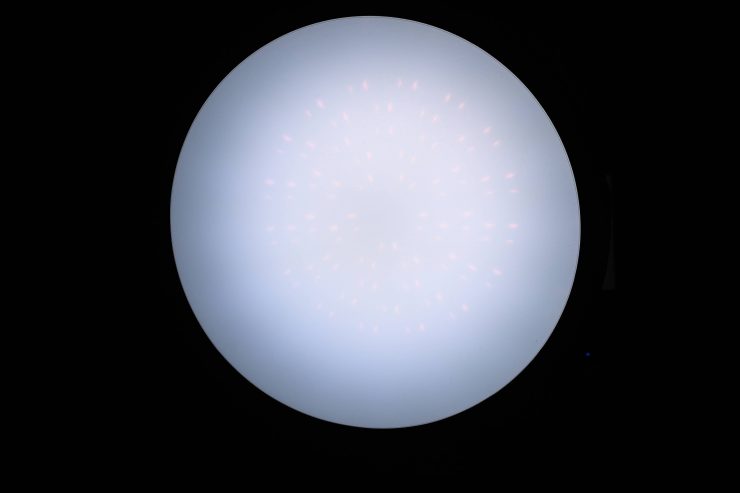
100% 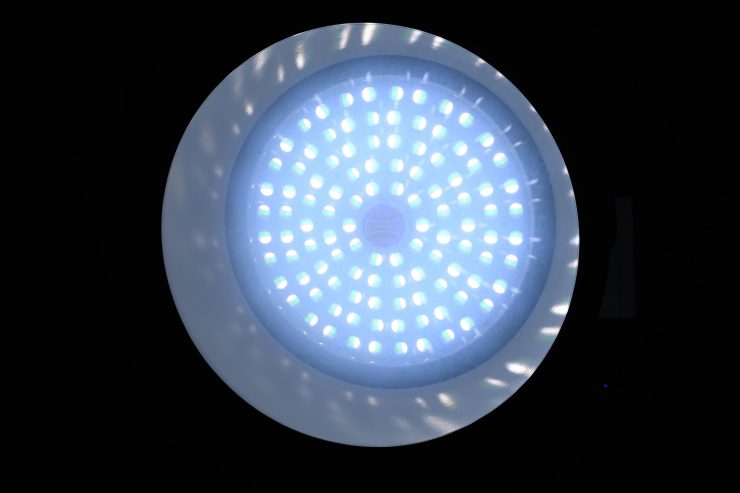
50% 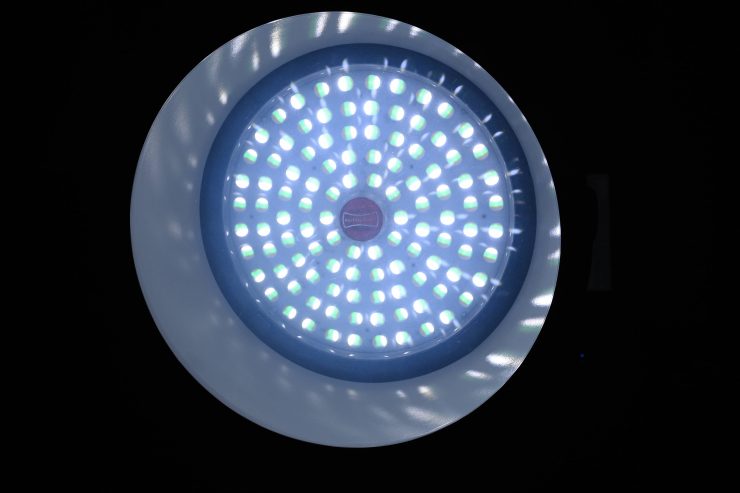
25% 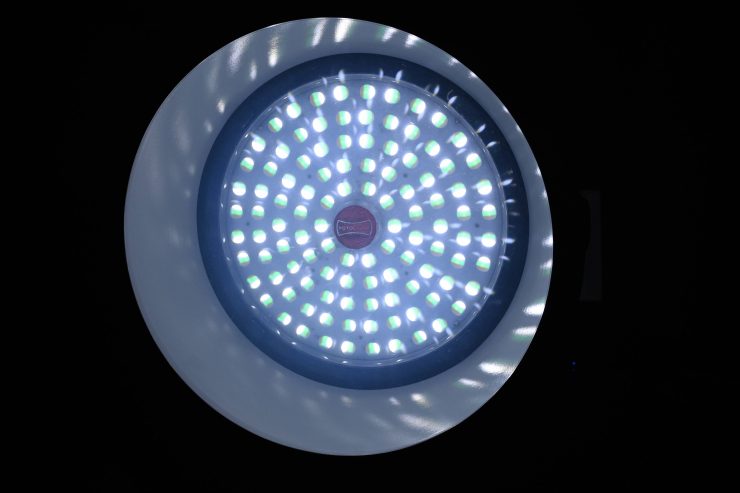
0%
Above you can see the difference in diffusion with various amounts dialed in.
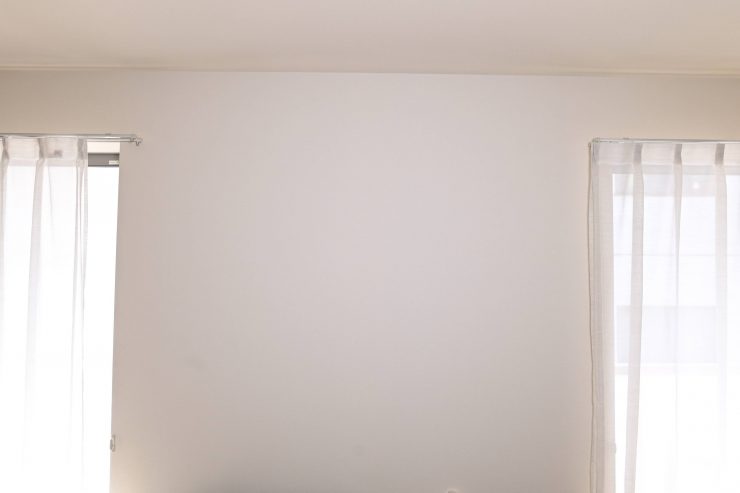
AEOS 2 Pro & Diffusion Dome 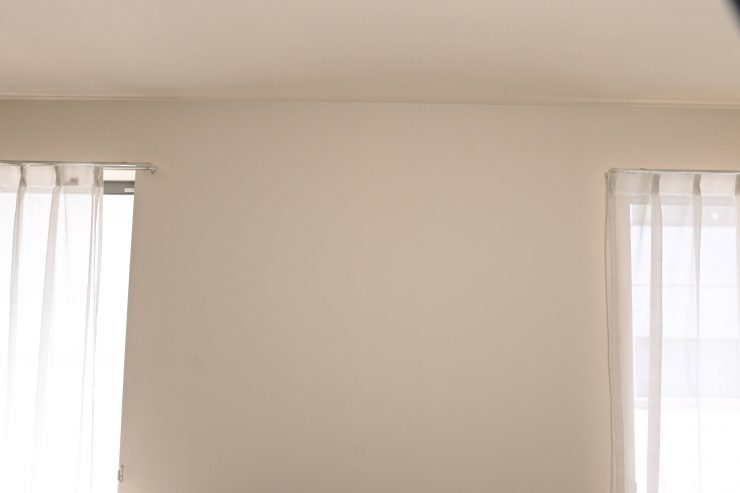
AEOS 2 Pro & SmartSoft Box set at 100% diffusion 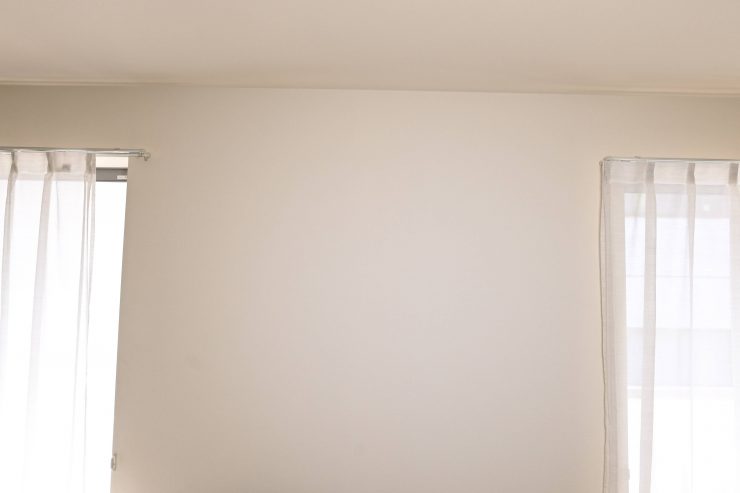
AEOS 2 Pro & SmartSoft Box set at 50% diffusion 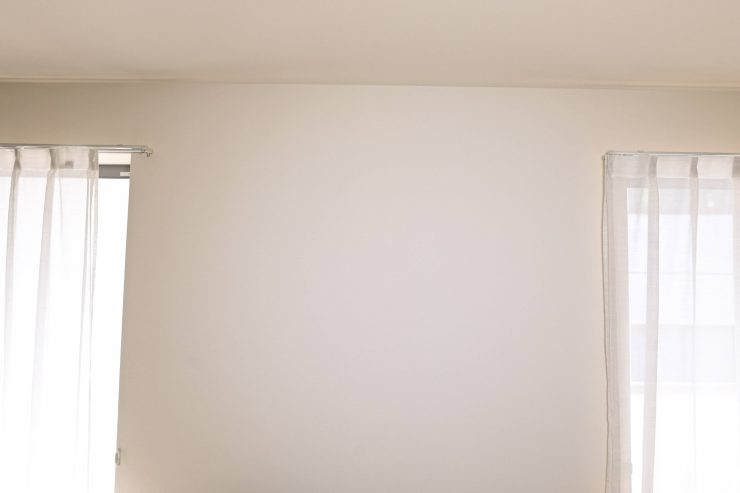
AEOS 2 Pro & SmartSoft Box set at 0% diffusion 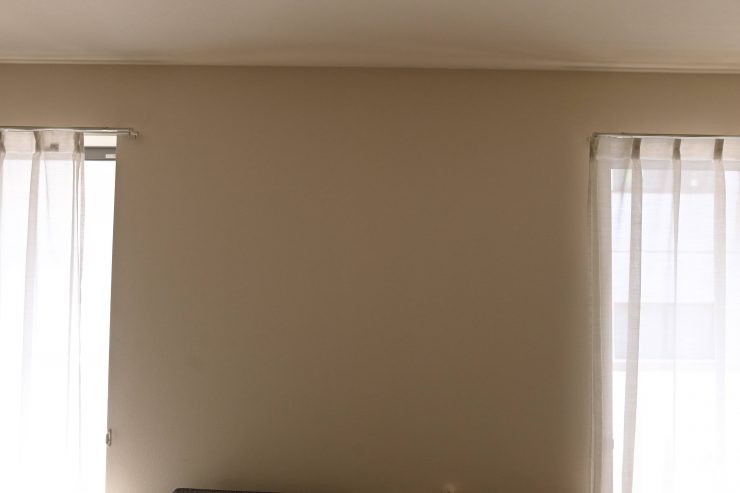
Light OFF
Now, if you want to see how the real-world output compares to using the AEOS 2 Pro’s diffusion dome, I have you covered. Above I have exposed for the diffusion dome and then I have kept that same exposure for the shots with the SmartSoft Box being used. These may be crude tests, but they are designed to show you exactly what is happening. You can see that the fall-off is a lot softer when using the SmartSoft Box at 100% diffusion.
You can also clearly see the CCT shift when using the SmartSoft Box, especially when the diffusion is set to 100%. I found this during the technical testing of the SmartSoft Box and it certainly translates over to the real-world.
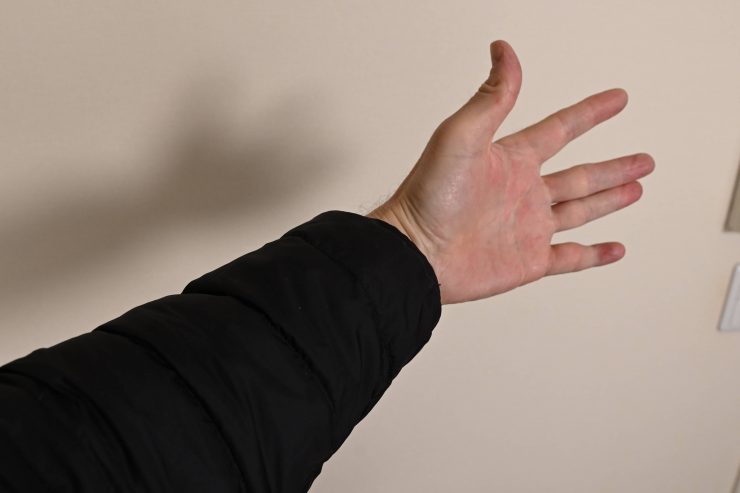
SmartSoft Box 100% diffusion (hand 1′ from the wall) 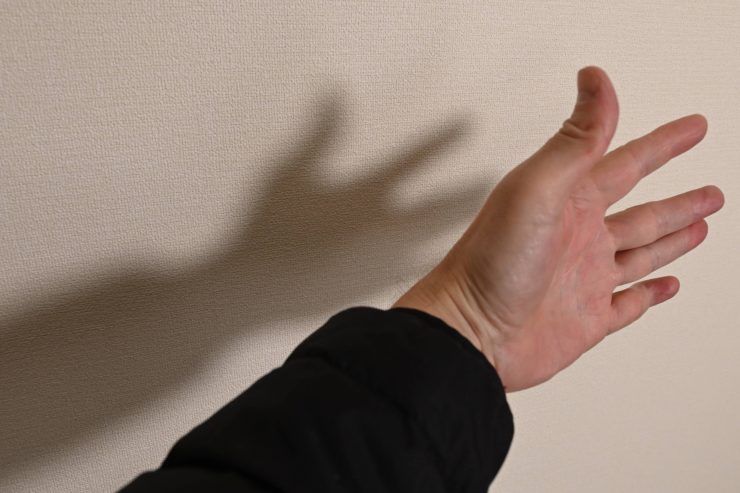
SmartSoft Box 100% diffusion (hand 5″ from the wall)
As far as creating soft shadows, the SmartSoft Box does a pretty good job, especially when used at 100% diffusion.
Price & Availability
The Rotolight AEOS 2 SmartSoft Box is now available to pre-order from B&H for $499.99 USD. You can also buy it directly from Rotolight which has it in stock.

